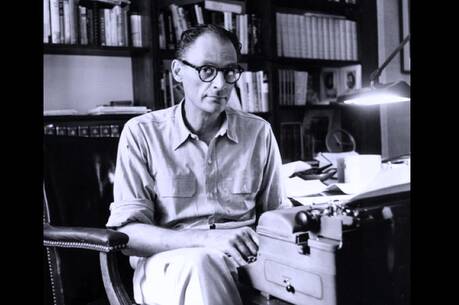There are gales of laughter in the community room of the Jesuit retreat house. One of the senior team members there is a keen photographer. He has just been out for a long walk on the hills in search of photo opportunities. Specifically, he has been trying to catch some good shots of the local bird population. A colleague asks him how the project is going. He is only too eager to enlighten us all and adds, with a convincing air of technological savoir-faire, that he has been able to get some spectacular results using his “apostolic lens.” We dissolve in merriment at this Freudian slip. Perhaps that is what comes of trying to live the principle of turning contemplation into action. My Jesuit friend has managed to discover the secrets of his apostolate in the depths of his digital camera.
He does not need to clarify the fact that, of course, he means his telescopic lens. But it sets me thinking what a wonderful device such an “apostolic lens” might be, what an indispensable spiritual tool. An everyday example comes to mind. My very small granddaughter is the contented occupant of a stroller that reminds me a lot of the apostolic lens. It is so designed that when the baby is very young, she lies in the pram facing the person who is caring for her. This means that she can gaze at her parent and allow the parent’s gaze to fall constantly upon her. When she is a bit older and becomes more of a toddler, the pram can be turned into a baby carriage, and now she rides the other way round, facing out into the world, eager to absorb all the new impressions that are beaming in on her.
The apostolic lens would be a bit like that. Held one way, it would draw our gaze to God. With a quiet heart we could contemplate the source of our being and draw peace and love from simply being consciously held in God’s presence, as a baby gazes at its mother and drinks in peace and love at her breast, never questioning the security of the strong arms that hold her. Held the other way, it would draw our gaze to the world around us, challenging us continually with the question: In this situation, how do I apply the love of God and the values and attitudes of Jesus of Nazareth? How do I live and move in this world in a way that reflects the mind and heart of God?
We need both directions. We never stop being babes in arms as far as God is concerned, and we are helpless unless and until we draw on God’s love that is always gazing down upon us, waiting to be engaged. Yet our call to discipleship also asks of us that we grow up and turn our sights beyond ourselves, committing ourselves to address the needs of the world around us. Perhaps my Jesuit friend’s slip of the tongue has something important to tell us about this delicate balance between contemplation and action.
While the apostolic lens would be a marvelous gadget to have in our spiritual toolkit, a more ambiguous implement is the mythical device we might call the “retrospectroscope.” The retrospectroscope is constantly pointing backwards. It rebukes us with the knowledge that we could have achieved very much better results, been so much happier, healthier, wiser. “If only we had known then what we know now.” The retrospectoscope is always taking photographs of objects that have disappeared. It can become addictive. We can get hooked on focusing on everything that might have been: “If only....” The result can be that we fail to see what actually lies in front of us and around us. We lose the present to the past. The gift of hindsight is a gift wrapped in thorns. It can help us make better choices in the future. But it can easily lock us into a past that is no longer helpful. It needs to be used with care, and with gentleness and hope. Jesus was constantly reminding people to face forward, to follow him and to allow him to take them beyond the shackles and illusions of the past.
Perhaps the least helpful tool for our spiritual journey is the notion that God is some kind of satellite navigational aid on the dashboard of our life’s vehicle. If we listen hard enough, we sometimes think, we will hear the divine signals coming through: keep right, take the next exit; take a left in half a mile. But it is not so easy! I was once driving through a sprawling city, and just crossing a wide river, when the navigation system suddenly insisted that I should “take an immediate right turn”—straight into the river!
God did not create robots that are programmed to follow instructions, but human beings who are invited to follow a person—the person of God revealed in human form. We have to make every choice ourselves, but not alone. The wisdom we need is within us, not some add-on gadget. Not so much a G.P.S. tracker as a compass. God never promised us an easy ride, with all decisions made for us by some divine Web site in the sky. But God promises to travel with us, every mile of the way, helping us to read the compass that lies deep within our hearts.
As fall approaches, it might be a good time to check out the contents of our spiritual toolkit. A bit of stock-taking could reveal those techniques and practices that are helping us move closer to God, to ourselves and to one another. On the other hand, we might find notions and attitudes lurking in the dusty corners that are worth jettisoning. The Gospel is about “making all things new.” What tools help us cooperate in that great vision, and how might we use them more effectively?








